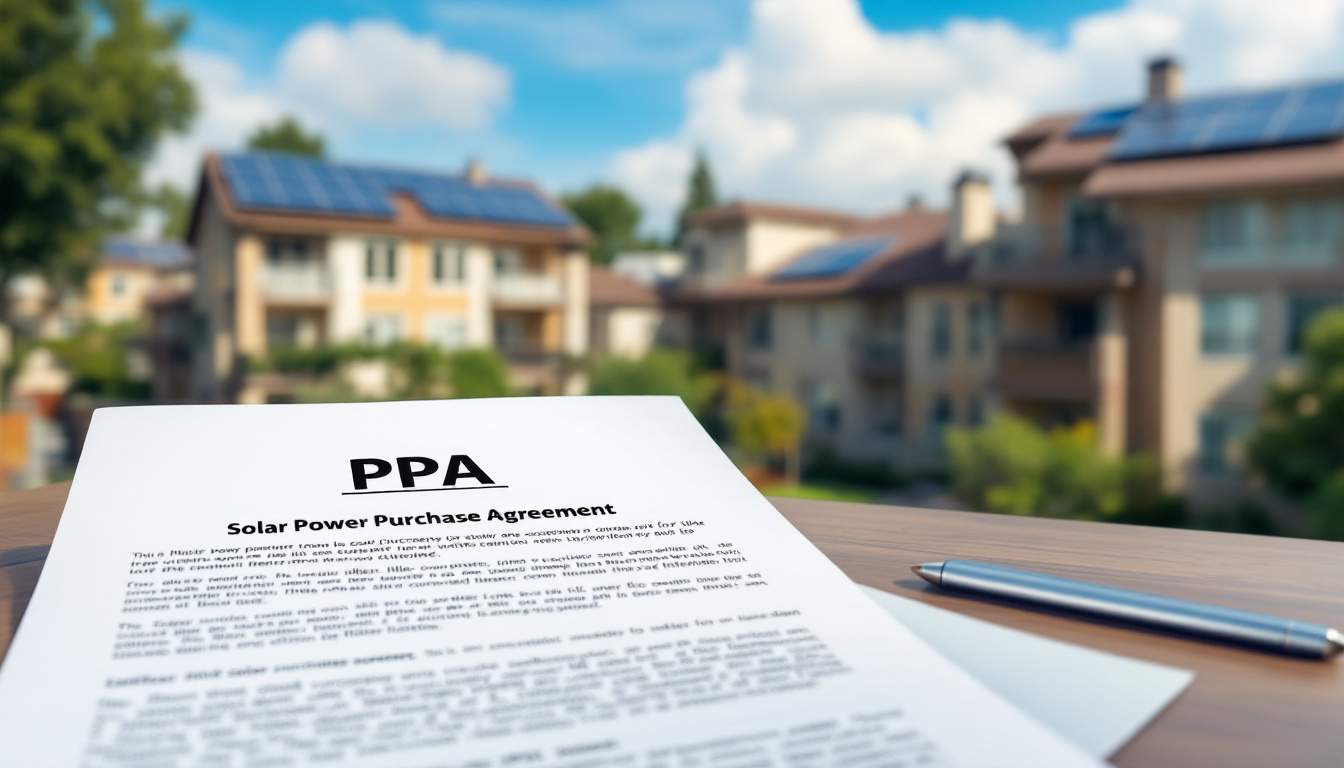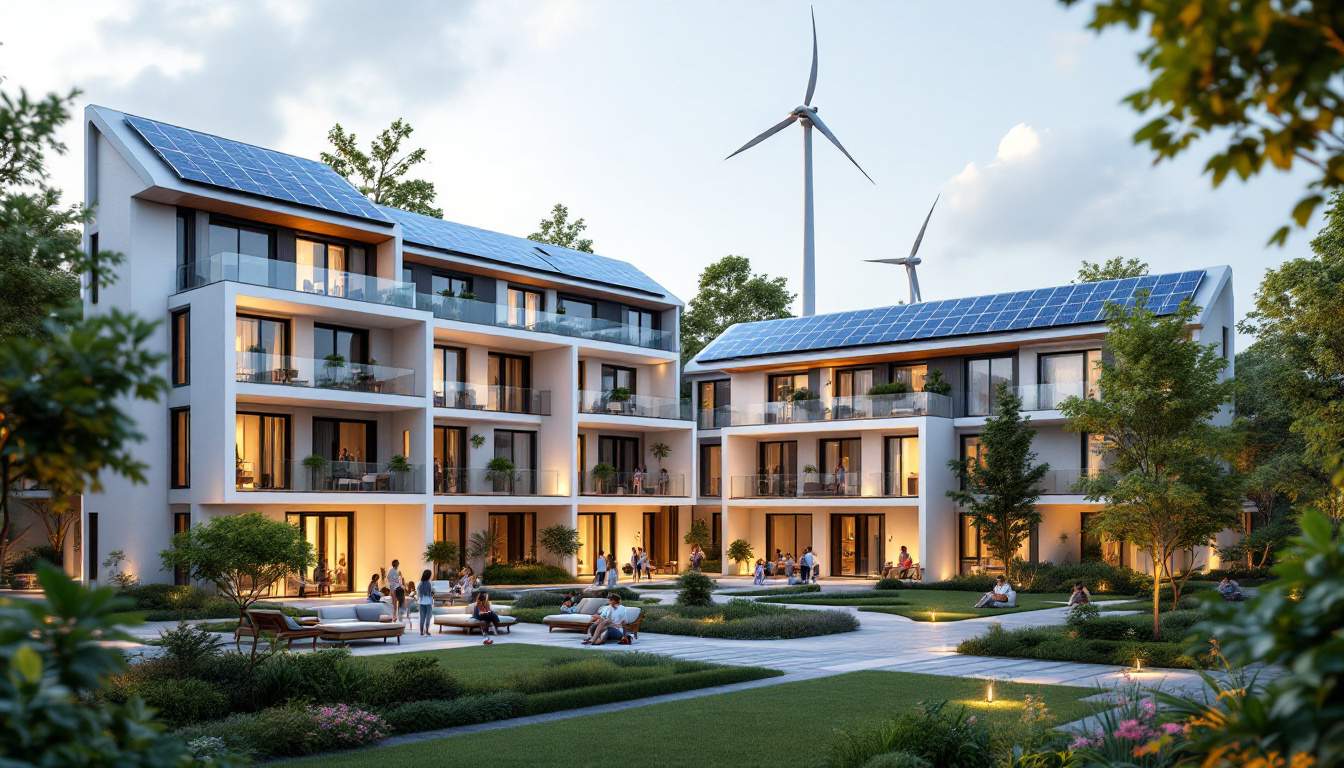In the evolving landscape of renewable energy, multi-family housing owners are uniquely positioned to benefit from solar power. Solar Power Purchase Agreements (PPAs) present a compelling opportunity for property owners to reduce energy costs while contributing to environmental sustainability. This article delves into the myriad advantages of PPAs, offering insights into how they can transform energy management for multi-family housing. As the world increasingly shifts towards sustainable practices, understanding the nuances of solar energy and its financial implications becomes essential for property owners looking to stay competitive in the market.
Understanding Solar Power Purchase Agreements
Solar Power Purchase Agreements are financial arrangements in which a third-party developer owns, operates, and maintains a solar energy system, while a customer agrees to host the system on their property and purchase the system’s electric output. This model allows property owners to enjoy the benefits of solar energy without the upfront costs associated with purchasing and installing solar panels. The simplicity of this arrangement is one of its most attractive features, as it allows property owners to focus on their primary business operations without the distraction of managing a solar installation.
The Mechanics of PPAs
PPAs are structured to provide immediate savings on electricity bills. The property owner pays for the electricity generated by the solar system at a rate typically lower than the local utility’s retail rate. This arrangement not only reduces energy costs but also provides price stability over the term of the agreement, which can range from 10 to 25 years. This long-term stability is particularly beneficial in an era of fluctuating energy prices, as it allows property owners to budget more effectively and avoid the unpredictability of traditional energy costs. Furthermore, the third-party developer is responsible for the installation, operation, and maintenance of the solar system. This means that property owners can benefit from solar energy without the burden of system upkeep, allowing them to focus on their core business operations. The seamless integration of solar energy into existing infrastructure can also enhance the overall efficiency of energy use within the property.
Financial Benefits of PPAs
One of the primary advantages of PPAs is the elimination of upfront capital expenditure. By entering into a PPA, multi-family housing owners can leverage solar energy without the need for significant initial investment. This financial model is particularly attractive for property owners who may not have the capital to invest in solar infrastructure. Additionally, PPAs can enhance the value of a property. As energy costs decrease, the net operating income of the property increases, potentially leading to higher property valuations. This can be a significant advantage in competitive real estate markets. Moreover, the financial benefits extend beyond mere cost savings; they can also include tax incentives and rebates that may be available for solar energy adoption, further improving the return on investment for property owners.
Environmental and Social Impact
Beyond financial savings, PPAs offer substantial environmental benefits. By adopting solar energy, multi-family housing owners can significantly reduce their carbon footprint, contributing to a cleaner, more sustainable environment. This commitment to sustainability can also enhance the property’s appeal to environmentally conscious tenants. In an age where climate change is a pressing global issue, property owners who invest in renewable energy sources like solar power are not only making a sound financial decision but also taking a stand for the planet. This proactive approach can resonate with tenants who prioritize sustainability, leading to a more engaged and loyal tenant base.

Reducing Carbon Emissions
Solar energy is a clean, renewable resource that produces no direct emissions. By transitioning to solar power through a PPA, property owners can play a crucial role in reducing greenhouse gas emissions, aligning with broader environmental goals and regulations. Furthermore, the adoption of solar energy can serve as a powerful statement of environmental responsibility, setting a positive example for tenants and the community at large. This can foster a culture of sustainability within the property, encouraging tenants to adopt eco-friendly practices such as recycling, energy conservation, and reduced water usage. The ripple effect of such initiatives can lead to a more sustainable community overall, as tenants become advocates for environmental stewardship.
Enhancing Tenant Satisfaction
Tenants are increasingly seeking out properties that align with their values, including environmental sustainability. By implementing a solar PPA, property owners can attract and retain tenants who prioritize green living. This can lead to higher occupancy rates and tenant satisfaction, ultimately benefiting the property’s bottom line. Additionally, properties that utilize renewable energy sources often experience lower utility costs, which can be a significant selling point for prospective tenants. The ability to market a property as “green” or “eco-friendly” can differentiate it from competitors, making it more appealing in a crowded rental market. Furthermore, tenants who are aware of their landlord’s commitment to sustainability may be more likely to renew their leases, reducing turnover and associated costs.
Implementing a Solar PPA for Multi-Family Housing
Embarking on a solar PPA requires careful planning and consideration. Property owners must evaluate their energy needs, assess the suitability of their property for solar installation, and select a reputable PPA provider. This section outlines the steps involved in implementing a successful solar PPA. The process may seem daunting at first, but with the right approach and resources, property owners can navigate the complexities of solar energy adoption with confidence.

Assessing Energy Needs and Site Suitability
The first step in implementing a solar PPA is to conduct a comprehensive assessment of the property’s energy needs. This involves analyzing current energy consumption patterns and identifying potential areas for improvement. Understanding these needs is crucial for designing a solar system that maximizes efficiency and savings. Property owners should consider factors such as peak energy usage times, seasonal variations in energy consumption, and the potential for energy efficiency upgrades. Additionally, site suitability is another critical factor. The property’s location, roof space, and orientation all influence the feasibility and effectiveness of a solar installation. A thorough site assessment will help determine the optimal configuration for the solar system. This may include evaluating shading from nearby trees or buildings, the structural integrity of the roof, and local zoning regulations that could impact the installation process.
Selecting a PPA Provider
Choosing the right PPA provider is essential for a successful solar project. Property owners should seek providers with a proven track record in the industry, ensuring they have the expertise and resources to deliver a high-quality solar solution. It’s important to evaluate the provider’s experience, customer service, and financial stability. Additionally, property owners should carefully review the terms of the PPA, including the length of the agreement, pricing structure, and responsibilities of each party. A well-negotiated PPA can provide long-term benefits and peace of mind. Property owners may also want to consider seeking recommendations from other property owners who have successfully implemented solar PPAs, as firsthand experiences can provide valuable insights into the selection process.
Understanding the Legal and Regulatory Framework
Before finalizing a PPA, it is crucial for property owners to understand the legal and regulatory framework surrounding solar energy in their region. This includes local, state, and federal regulations that may impact the installation and operation of solar systems. Property owners should familiarize themselves with any incentives, rebates, or tax credits available for solar energy adoption, as these can significantly enhance the financial viability of a PPA. Additionally, understanding the interconnection requirements with the local utility company is essential to ensure a smooth transition to solar energy. Engaging with legal counsel or a consultant who specializes in renewable energy can provide further clarity and help navigate any potential challenges.
Long-Term Considerations and Maintenance
While PPAs alleviate the burden of upfront costs and maintenance responsibilities, property owners should still consider the long-term implications of their solar investment. Regular monitoring and performance assessments of the solar system are essential to ensure it operates at peak efficiency. Many PPA providers offer monitoring services as part of their agreement, allowing property owners to track energy production and savings over time. Additionally, property owners should remain informed about advancements in solar technology and potential upgrades that could enhance system performance. As the renewable energy landscape continues to evolve, staying abreast of new developments can provide opportunities for further savings and efficiency improvements.
Conclusion: Embracing the Future of Energy
Solar Power Purchase Agreements offer a transformative opportunity for multi-family housing owners to embrace renewable energy. By reducing energy costs, enhancing property value, and contributing to environmental sustainability, PPAs represent a forward-thinking approach to energy management. As the demand for clean energy continues to grow, property owners who adopt solar PPAs will be well-positioned to lead the way in sustainable living. In conclusion, the transition to solar energy through PPAs is not just a financial decision but a commitment to a sustainable future. Multi-family housing owners who seize this opportunity can enjoy significant benefits while making a positive impact on the environment and their communities. By investing in solar energy, property owners are not only securing their financial future but also contributing to a healthier planet for generations to come.




